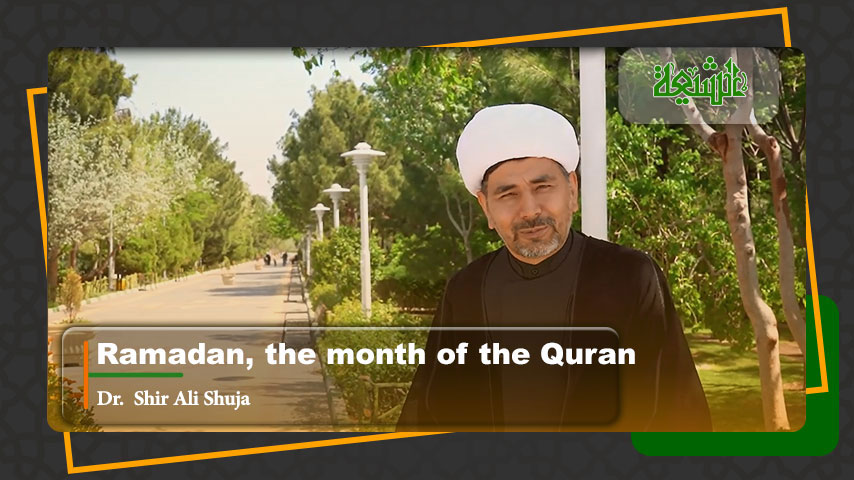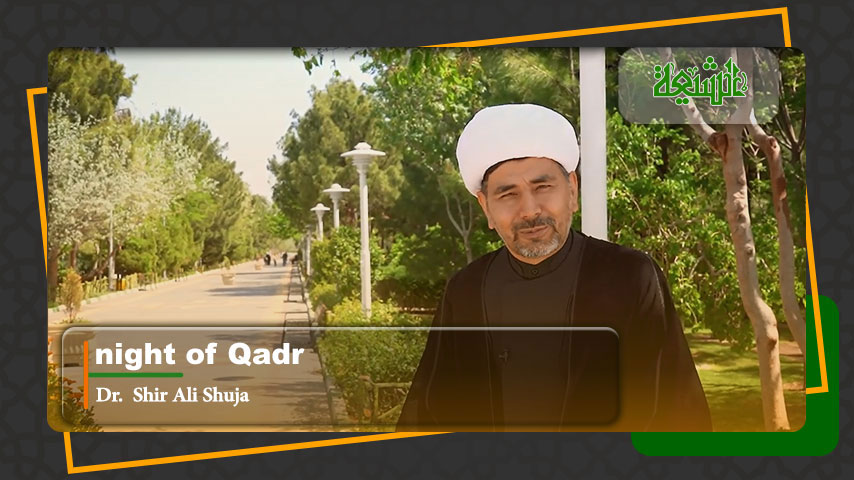In this part of the article titled “The history of Shia Islam”, we shall look briefly at the history of Shi’ism from the 2nd/8th century to the 20th century.
Shi’ism During the 2nd/8th Century
During the latter part of the first third of the 2nd/8th century, following a series of revolutions and bloody wars throughout the Islamic world which were due to the injustice, repressions, and wrongdoings of the Umayyads there began an anti-Umayyad movement in the name of the Household of The Holy Prophet (s.a.w.a) in Khurasan in Persia.
The leader of this movement was the Persian general, Abu Muslim Marwazi, who rebelled against Umayyad rule and advance his cause step by step until he was able to overthrow the Umayyad government.
Although this movement originated from a profound Shia background and came into being more or less with the claim of wanting to avenge the blood of the Household of The Holy Prophet (s.a.w.a), people were even asked secretly to give allegiance to a qualified member of the family of The Holy Prophet (s.a.w.a), it did not rise directly as a result of the instructions of the Imams.
This is witnessed by the fact that when Abu Muslim offered the Caliphate to the sixth Imam in Medina, he rejected it completely saying “You are not one of my men and the time is not my time.”
Finally, the Abbasids gained the Caliphate in the name of the family of The Holy Prophet (s.a.w.a) and at the beginning, showed some kindness to people in general and to descendants of The Holy Prophet (s.a.w.a) in particular.
In the name of avenging the martyrdom of the family of The Holy Prophet (s.a.w.a), they massacred the Umayyads, going to the extent of opening their graves and burning whatever they found in them. But soon they began to follow the unjust ways of the Umayyads and did not abstain in any way from injustice and irresponsible action.
Abu Hanifah, the founder of one of the four Sunni schools of law, was imprisoned by al-Mansur and whipped.
The sixth Imam died from poisoning after much torture and pain. The descendants of the Holy Prophet were sometimes beheaded in groups, buried alive, or even placed within walls of government buildings under construction.
Harun al-Rashid, the Abbasid caliph, during whose reign the Islamic empire reached the apogee of its expansion and power, occasionally would look at the sun and address it in these words:
“Shine wherever thou wilt, thou shalt never be able to leave my kingdom.”
On the other hand, his armies were advancing in the East and West a few steps from the palace of the Caliph, and without his knowledge, officials had decided on their own to collect tolls from people who wanted to cross the Baghdad bridge.
Even one day, when the Caliph himself wanted to cross the bridge, he was stopped and asked to pay the toll.
A singer, by chanting two lascivious verses, incited the passions of the Abbasid caliph, Amin, who awarded him three million dirhams. The chanter in joy threw himself at the feet of the Caliph saying, “Oh, leader of the faithful! You give me all this money?” The caliph answered, “It does not matter. We receive money from an unknown part of the country.”
The bewildering amount of wealth that was pouring every year from all corners of the Islamic world into the public treasury in the capital helped create luxury and a mundane atmosphere. Much of it in fact was often spent for the pleasures and iniquities of the Caliph of the time. The number of beautiful slave girls in the court of some of the Caliphs exceeded thousands.
With the dissolution of Umayyad rule and the establishment of the Abbasids, Shi’ism did not benefit in any way. Its repressive and unjust opponents merely changed their name.
Shi’ism in the 3rd/9th Century
At the beginning of the 3rd/9th century Shi’ism was able to breathe once again. This more favourable condition was first of all due to the fact that many scientific and philosophical books were translated from Greek, Syriac, and other languages into Arabic, and people eagerly studied the intellectual and rational sciences.
Moreover, al-Ma’mun, the Abbasid Caliph from 198/813 to 218/833, had Mu’tazilite leanings and since in his religious views he favoured intellectual demonstration, he was more inclined to give complete freedom to the discussion and propagation of different religious beliefs.
Shia theologians and scholars took full advantage of this freedom and did their utmost to further scholarly activities and propagate Shia teachings.
Also, al-Ma’mun, following demands of the political forces at the time, had made the eight Shia Imam his successor, as is recounted in most standard histories.
As a result, the descendants of the Holy Prophet (a.s) and their friends were to a certain extent free from pressures from the government and enjoyed some degrees of liberty.
Yet before long the cutting edge of the sword once again turned towards the Shias and the forgotten ways of the past came upon them again.
This was particularly true in the case of al-Mutawakkil (233/847-247/861) who held a special enmity towards Imam Ali (a.s) and the Shias. By his order, the tomb of the third Imam in Karbala was completely demolished.
Shi’ism in the 4th/10th Century
In the 4th/10th century, certain conditions again prevailed which greatly aided the spread and strengthening of Shi’ism. Among them were the weaknesses that appeared in the central Abbasid government and administration and the appearance of the Buyid rulers.
The Buyids, who were Shia had the most significant influence not only in the provinces of Persia, but also in the capital of the Caliphate in Baghdad, and even upon the Caliph himself.
This new strength of considerable proportions enabled the Shias to stand up before their opponents who previously had tried to crush them by relying upon the power of the Caliphate. It also made it possible for the Shias to propagate their religious views openly.
As recorded by historians, during this century most of the Arabian peninsula was Shia with the exception of some of the big cities. Even some of the major cities like Hajar, Uman, and Sa’dah were Shia.
In Basra, which had always been a Sunni city and competed with Kufa which was considered a Shia centre, there appeared a notable group of Shias.
Also in Tripoli, Nablus, Tiberias, Aleppo, Nayshapur, and Herat, there were many Shias, while Ahwaz and the coast of the Persian Gulf on the Persian side were also Shia.
At the beginning of this century, Nasir Utrush, after many years of propagation of his religious mission in northern Persia, gained power in Tabaristan and established a kingdom which continued for several generations after him.
Before Utrush, Hasan ibn Zayd al-‘Alawi had reigned for many years in Tabaristan. Also in this period the Fatimids, who were Isma’ili, conquered Egypt and organized a Caliphate which lasted for over two centuries (296/908-567/1171).
Often disputation and fighting occurred in major cities like Baghdad, Cairo and Nayshapur between Shias and Sunnis, in some of which the Shias would gain the upper hand and come out victorious.
Shi’ism from the 5th/11th to the 9th/15th Centuries
From the 5th/11th to the 9th/15th centuries Shi’ism continued to expand as it had done in the 4th/10th century. Many kings and rulers who were Shia appeared in different parts of the Islamic world and propagated Shi’ism.
Toward the end of the 5th/11th century, the missionary activity of Isma’ilism took root in the fort of Alamut and for nearly a century and a half, the Isma’ilis lived in complete independence in the central regions of Persia. Also, the Sadat-i Mar’ashi, who were descendants of the Holy Prophet, ruled for many years in Mazandaran (Tabaristan).
Shah Muhammad Khudabandah, one of the well-known Mongol rulers, became Shia and his descendants ruled for many years in Persia and were instrumental in spreading Shi’ism.
Mention must also be made of the kings of the Aq Qoyunlu and Qara Qoyunlu dynasties who ruled in Tabriz and whose domain extended to Fars and Kerman, as well as of the Fatimid government which was ruling in Egypt.
Of course, religious freedom and the possibility of exerting religious power by the populace differed under different rulers. For example, with the termination of Fatimid rule and the coming to power of the Ayyubids the scene changed completely and the Shia population of Egypt and Syria lost its religious independence.
Many of the Shias of Syria were killed during this period merely on the accusation of following Shi’ism. One of these was Shahid-i Awwal (the First Martyr) Muhammad ibn Makki, one of the great figures in Shia jurisprudence, who was killed in Damascus in 786/1384.
Also Shaykh al-Ishraq, and Shihab al-Din Suhrawardi were killed in Aleppo on the accusation that he was cultivating Batini teachings and philosophy.
Altogether during this period, Shi’ism was growing from the point of view of numbers, even though its religious power and freedom depended upon local conditions and the rulers of the time. During this period, however, Shi’ism never became the official religion of any Muslim state.
Shi’ism in the 10th/16th and 11th/17th Centuries
In the 10th/16th century Isma’il, who was of the household of Shaykh Safi al-Din Ardibili (d. 735/1334), a Sufi master and also a Shia, began a revolt in Ardabil, with three hundred Sufis who were disciples of his forefathers, with the aim of establishing an independent and powerful Shia country.
In this way, he began the conquest of Persia and overcame the local feudal princes. After a series of bloody wars with local rulers and also the Ottomans who held the title of Caliph, he succeeded in forming Persia piece by piece into a country and in making Shi’ism the official religion in his kingdom.
After the death of Shah Isma’il, other Safavid kings reigned in Persia until the 12th/18th century and each continued to recognize Shi’ism as the official religion of the country and further strengthen its hold upon this land.
At the height of their power, during the reign of Shah ‘Abbas, the Safavids were able to increase the territorial expansion and the population of Persia to twice its present size.
As for other Muslim lands, the Shia population continued the same as before and increased only through the natural growth of the population.
Shi’ism from the 12th/18th to the 14th/20th Centuries
During the past three centuries, Shi’ism has followed its natural rate of growth as before. Now, during the latter part of the 14th/20th century, Shi’ism is recognized as the official religion in Iran, and in Yemen and Iraq, the majority population is Shia.
In nearly all lands where there are Muslims, one can find a certain number of Shias. It has been said that altogether in the world today there are about eighty to ninety million Shias.
















